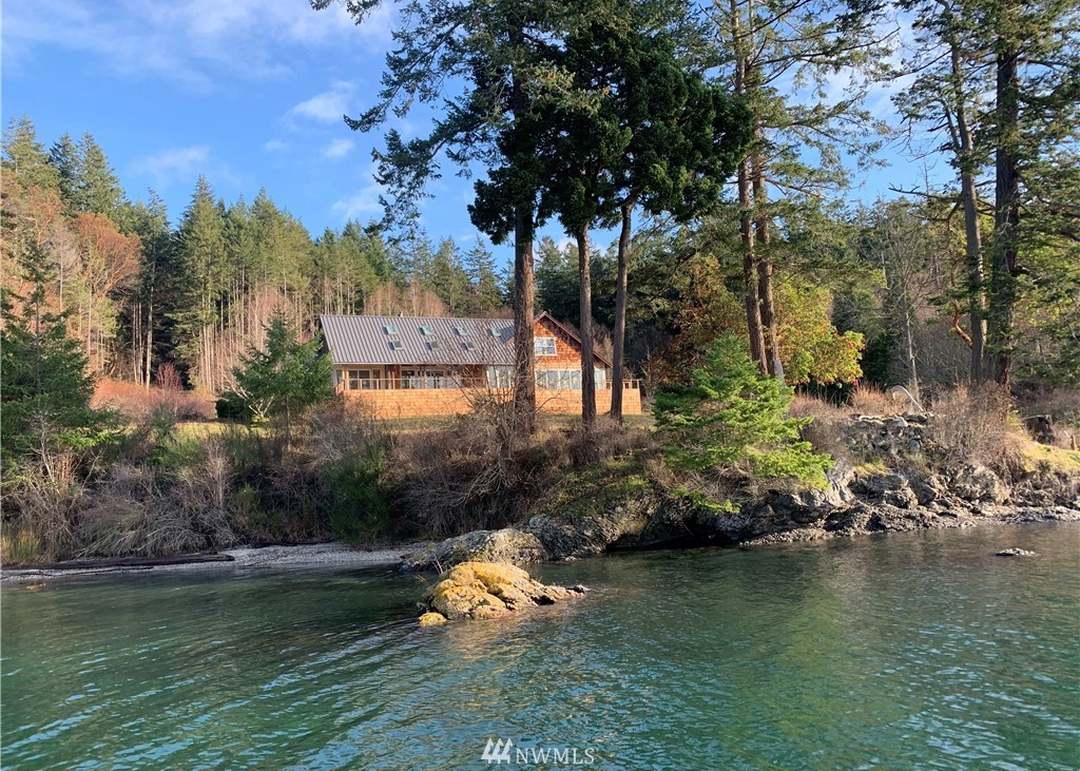Eastsound Sewage Treatment Facility may become state model – Islands’ Sounder

Report on the Eastsound Water District’s Wastewater Treatment Facility and its Contribution to Sustainable Development Goals
Executive Summary: A Model for Sustainable Infrastructure
The Eastsound Water District’s Wastewater Treatment Facility represents a significant achievement in sustainable infrastructure, aligning with several key United Nations Sustainable Development Goals (SDGs). Originally mandated to resolve a public health crisis from failing septic systems, the facility has evolved into a state-of-the-art operation that is now being considered as a potential model for new statewide environmental standards. Its innovative approach to wastewater management demonstrates a commitment to environmental stewardship, community resilience, and technological advancement.
SDG 6: Clean Water and Sanitation
The facility is a direct implementation of SDG 6, which aims to ensure the availability and sustainable management of water and sanitation for all. Its contributions are multifaceted:
- It provides essential sanitation services to 1,300 homes, processing approximately 100,000 gallons of wastewater daily.
- It successfully replaced widespread failing septic systems, which had previously caused significant public health risks, including sewage in public streets.
- The advanced treatment process produces water that is cleaner than the water in the receiving environment, directly contributing to improved water quality.
- By safely discharging highly treated effluent, the facility protects surrounding water bodies from pollution, upholding a core tenet of SDG 6.
SDG 9: Industry, Innovation, and Infrastructure
The project is a prime example of building resilient infrastructure and fostering innovation, central to SDG 9.
- Innovative Technology: The facility utilizes a unique Septic Tank Effluent Pumping (STEP) system. This decentralized collection method, where effluent is pumped from individual septic tanks to a central plant, is a key innovation being monitored by state officials for its effectiveness in nitrogen reduction.
- Resilient Infrastructure: A recent major renovation replaced original tanks with premium systems built from 12 inches of reinforced concrete and stainless steel components. This upgrade was designed for a 100-year lifespan, ensuring long-term resilience and service.
- Efficient Operations: Despite its technological sophistication, including advanced computer controls and monitoring, the entire system is managed by a lean staff of five full-time employees, demonstrating operational efficiency.
SDG 11 & 14: Sustainable Communities and Life Below Water
The facility’s impact extends to creating sustainable communities and protecting marine ecosystems, addressing SDG 11 and SDG 14, respectively.
- Sustainable Communities (SDG 11): The implementation of a centralized treatment solution was critical in lifting a state-imposed development moratorium, allowing for the planned and sustainable growth of the community. It provides a foundational service for a safe and resilient urban growth area.
- Life Below Water (SDG 14): The high level of wastewater treatment significantly reduces the discharge of pollutants into the surrounding marine environment. This proactive measure helps protect marine biodiversity and the health of coastal ecosystems from land-based pollution.
- Responsible Land Use (SDG 11): The STEP system eliminates the need for traditional, land-intensive septic drain fields, which require significant acreage and are prone to failure, allowing for more efficient and sustainable land use.
Governance and Operational Framework
The Eastsound Water District operates under a responsible governance model that ensures accountability and effective management in line with sustainable principles.
- Community Oversight: The district is managed by five elected commissioners who serve six-year terms, ensuring the infrastructure operates in the public’s interest.
- Comprehensive Management: The operational team is responsible for the entire system, from the advanced treatment plant to the maintenance of the distributed septic tanks throughout the community.
- Commitment to Responsibility: The governance structure emphasizes regular oversight and a deep understanding of the facility’s operations to ensure continued success and environmental compliance.
Which SDGs are addressed or connected to the issues highlighted in the article?
-
SDG 6: Clean Water and Sanitation
The article’s primary focus is on the Eastsound Water District’s Wastewater Treatment Facility, which directly addresses the need for effective sanitation and wastewater management. It details the community’s transition from “failing septic systems” and “sewage in the streets” to a centralized, advanced treatment system, which is the core of SDG 6.
-
SDG 9: Industry, Innovation, and Infrastructure
The article highlights the development of resilient and innovative infrastructure. It describes the “massive renovation” of the treatment plant, replacing old tanks with “premium systems designed to last 100 years” using reinforced concrete and stainless steel. The unique “STEP” system is presented as an innovation that may become a “model for the state,” aligning with the goal of building sustainable and modern infrastructure.
-
SDG 11: Sustainable Cities and Communities
The project is a community-level solution to manage municipal waste (sewage) effectively. By implementing a centralized system to handle wastewater for 1,300 homes, the community has reduced its adverse environmental impact, moving from a situation of “widespread septic system failures” to a managed and sustainable solution, which is a key aspect of SDG 11.
-
SDG 14: Life Below Water
The article mentions that the advanced treatment results in water that is “safely discharged into surrounding waters.” A key feature of the facility is its potential to set new standards for “nitrogen reduction.” This directly addresses the goal of reducing land-based pollution, particularly nutrient pollution, which can harm marine and aquatic ecosystems.
What specific targets under those SDGs can be identified based on the article’s content?
-
Target 6.2: Achieve access to adequate and equitable sanitation
The article describes how the community addressed a “state mandate” due to “widespread septic system failures” by implementing a centralized wastewater system that serves “1,300 homes.” This directly reflects the effort to provide the population with access to an adequate and safely managed sanitation service.
-
Target 6.3: Improve water quality by reducing pollution and treating wastewater
The facility “processes 100,000 gallons daily,” preventing untreated sewage from polluting the environment. The article explicitly states that the “advanced treatment produces water cleaner than what enters the system” and is being monitored for its effectiveness in “nitrogen reduction,” directly contributing to improving water quality by treating wastewater and reducing pollution.
-
Target 9.1: Develop quality, reliable, sustainable and resilient infrastructure
The article details the infrastructure’s evolution from an “economy version” to a robust system with “12 inches of reinforced concrete and stainless steel components” designed to “last 100 years.” This demonstrates a clear commitment to building high-quality, resilient, and sustainable infrastructure to support the community’s well-being.
-
Target 11.6: Reduce the adverse per capita environmental impact of cities, including… municipal and other waste management
The entire project is an example of effective municipal waste management. By centralizing the treatment of sewage from a large part of the community, the district has significantly reduced the environmental pollution that was occurring when individual septic systems were failing and causing “sewage in the streets.”
-
Target 14.1: Prevent and significantly reduce marine pollution of all kinds, in particular from land-based activities, including… nutrient pollution
The facility’s role as a potential model for “statewide regulations for nitrogen reduction” is a direct measure to combat nutrient pollution from a land-based source (sewage). By treating the wastewater before it is “safely discharged into surrounding waters,” the system helps prevent pollution of nearby aquatic environments.
Are there any indicators mentioned or implied in the article that can be used to measure progress towards the identified targets?
-
Proportion of population using safely managed sanitation services
The article states the system serves “1,300 homes,” which is a direct measure of the population with access to the facility. This can be used as an indicator for Target 6.2.
-
Proportion of wastewater safely treated
The facility’s capacity to process “100,000 gallons daily” is a quantitative indicator of the volume of wastewater being safely treated, relevant to Target 6.3.
-
Quality of ambient water bodies
The mention of “nitrogen reduction” as a key performance metric and the fact that the state is “closely monitoring the operation” imply that water quality parameters (like nitrogen levels) are being measured. The claim that the discharged water is “cleaner than what enters the system” is a qualitative indicator of treatment effectiveness, relevant to Targets 6.3 and 14.1.
-
Investment in and quality of infrastructure
The description of the renovation—”replacing quarter-inch steel with 12 inches of reinforced concrete and stainless steel components” and a design life of “100 years”—serves as a qualitative indicator of investment in resilient and sustainable infrastructure for Target 9.1.
Table of SDGs, Targets, and Indicators
| SDGs | Targets | Indicators Identified in Article |
|---|---|---|
| SDG 6: Clean Water and Sanitation | 6.2: Achieve access to adequate and equitable sanitation. | Number of homes connected to the centralized sanitation system (1,300 homes). |
| 6.3: Improve water quality by reducing pollution and treating wastewater. | Volume of wastewater safely treated (100,000 gallons daily). | |
| SDG 9: Industry, Innovation, and Infrastructure | 9.1: Develop quality, reliable, sustainable and resilient infrastructure. | Upgraded infrastructure materials (reinforced concrete, stainless steel) and design life (100 years). |
| SDG 11: Sustainable Cities and Communities | 11.6: Reduce the adverse per capita environmental impact of cities… including waste management. | Centralized management of sewage, preventing pollution from failing septic systems. |
| SDG 14: Life Below Water | 14.1: Prevent and significantly reduce marine pollution… including nutrient pollution. | Facility’s specific focus on “nitrogen reduction” before discharging water. |
Source: islandssounder.com

What is Your Reaction?
 Like
0
Like
0
 Dislike
0
Dislike
0
 Love
0
Love
0
 Funny
0
Funny
0
 Angry
0
Angry
0
 Sad
0
Sad
0
 Wow
0
Wow
0












































































